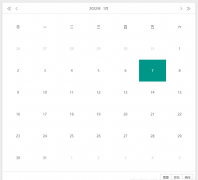问题描述
I need to pass and recieve two parameters to the state I want to transit to using ui-sref of ui-router.
Something like using the link below for transitioning the state to home with foo and bar parameters:
<a ui-sref="home({foo: 'fooVal', bar: 'barVal'})">Go to home state with foo and bar parameters </a>
Receiving foo and bar values in a controller:
app.controller('SomeController', function($scope, $stateParam) {
//..
var foo = $stateParam.foo; //getting fooVal
var bar = $stateParam.bar; //getting barVal
//..
});
I get undefined for $stateParam in the controller.
Could somebody help me understand how to get it done?
Edit:
.state('home', {
url: '/',
views: {
'': {
templateUrl: 'home.html',
controller: 'MainRootCtrl'
},
'A@home': {
templateUrl: 'a.html',
controller: 'MainCtrl'
},
'B@home': {
templateUrl: 'b.html',
controller: 'SomeController'
}
}
});
I've created an example to show how to. Updated state definition would be:
$stateProvider
.state('home', {
url: '/:foo?bar',
views: {
'': {
templateUrl: 'tpl.home.html',
controller: 'MainRootCtrl'
},
...
}
And this would be the controller:
.controller('MainRootCtrl', function($scope, $state, $stateParams) {
//..
var foo = $stateParams.foo; //getting fooVal
var bar = $stateParams.bar; //getting barVal
//..
$scope.state = $state.current
$scope.params = $stateParams;
})
What we can see is that the state home now has url defined as:
url: '/:foo?bar',
which means, that the params in url are expected as
/fooVal?bar=barValue
These two links will correctly pass arguments into the controller:
<a ui-sref="home({foo: 'fooVal1', bar: 'barVal1'})">
<a ui-sref="home({foo: 'fooVal2', bar: 'barVal2'})">
Also, the controller does consume $stateParams instead of $stateParam.
Link to doc:
- URL Parameters
You can check it here
params : {}
There is also new, more granular setting params : {}. As we've already seen, we can declare parameters as part of url. But with params : {} configuration - we can extend this definition or even introduce paramters which are not part of the url:
.state('other', {
url: '/other/:foo?bar',
params: {
// here we define default value for foo
// we also set squash to false, to force injecting
// even the default value into url
foo: {
value: 'defaultValue',
squash: false,
},
// this parameter is now array
// we can pass more items, and expect them as []
bar : {
array : true,
},
// this param is not part of url
// it could be passed with $state.go or ui-sref
hiddenParam: 'YES',
},
...
Settings available for params are described in the documentation of the $stateProvider
Below is just an extract
- value - {object|function=}: specifies the default value for this parameter. This implicitly sets this parameter as optional...
- array - {boolean=}: (default: false) If true, the param value will be treated as an array of values.
- squash - {bool|string=}: squash configures how a default parameter value is represented in the URL when the current parameter value is the same as the default value.
We can call these params this way:
// hidden param cannot be passed via url
<a href="#/other/fooVal?bar=1&bar=2">
// default foo is skipped
<a ui-sref="other({bar: [4,5]})">
Check it in action here
这篇关于如何使用ui-router中的ui-sref将参数传递给控制器的文章就介绍到这了,希望我们推荐的答案对大家有所帮助,也希望大家多多支持跟版网!





 大气响应式网络建站服务公司织梦模板
大气响应式网络建站服务公司织梦模板 高端大气html5设计公司网站源码
高端大气html5设计公司网站源码 织梦dede网页模板下载素材销售下载站平台(带会员中心带筛选)
织梦dede网页模板下载素材销售下载站平台(带会员中心带筛选) 财税代理公司注册代理记账网站织梦模板(带手机端)
财税代理公司注册代理记账网站织梦模板(带手机端) 成人高考自考在职研究生教育机构网站源码(带手机端)
成人高考自考在职研究生教育机构网站源码(带手机端) 高端HTML5响应式企业集团通用类网站织梦模板(自适应手机端)
高端HTML5响应式企业集团通用类网站织梦模板(自适应手机端)